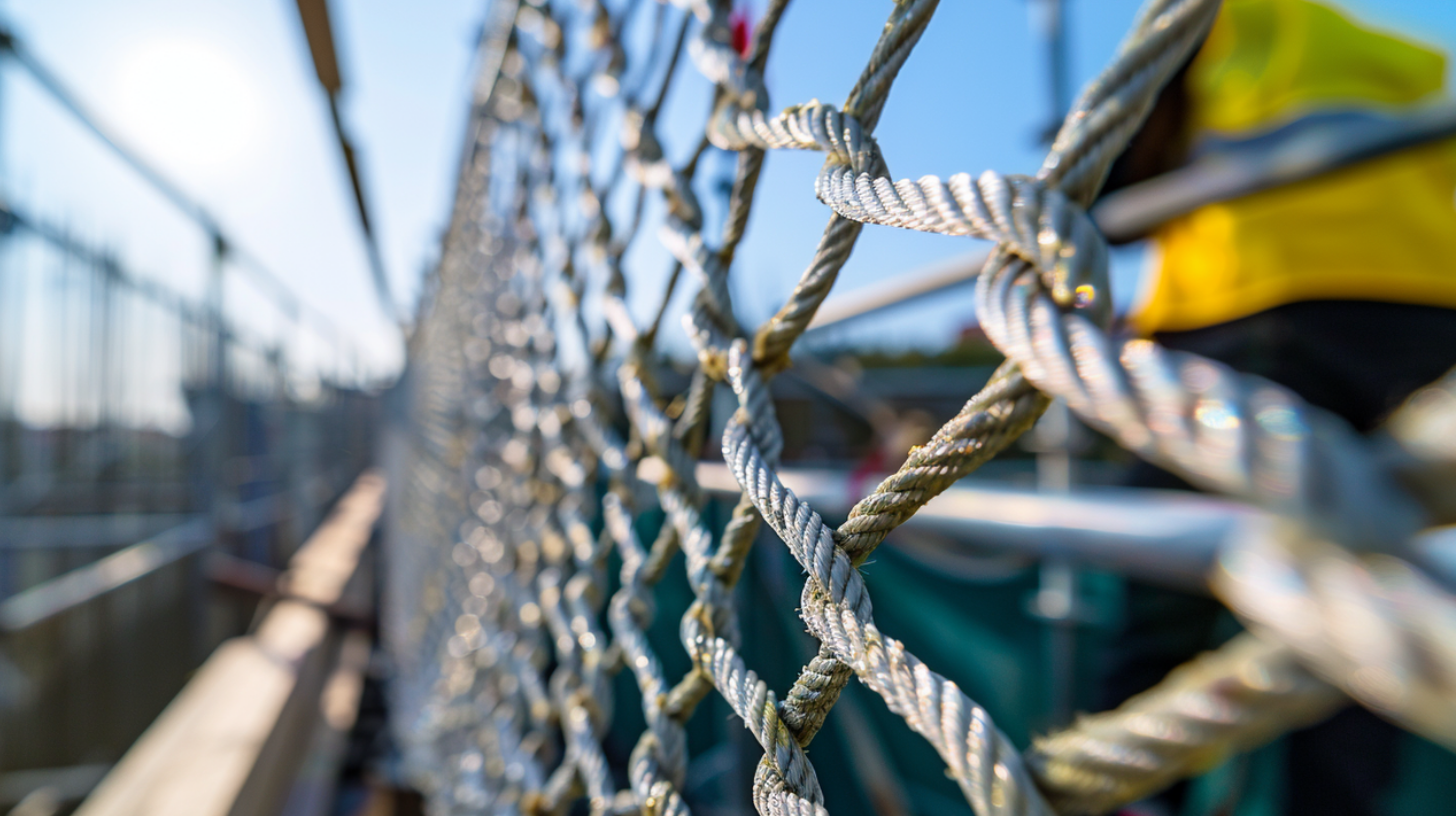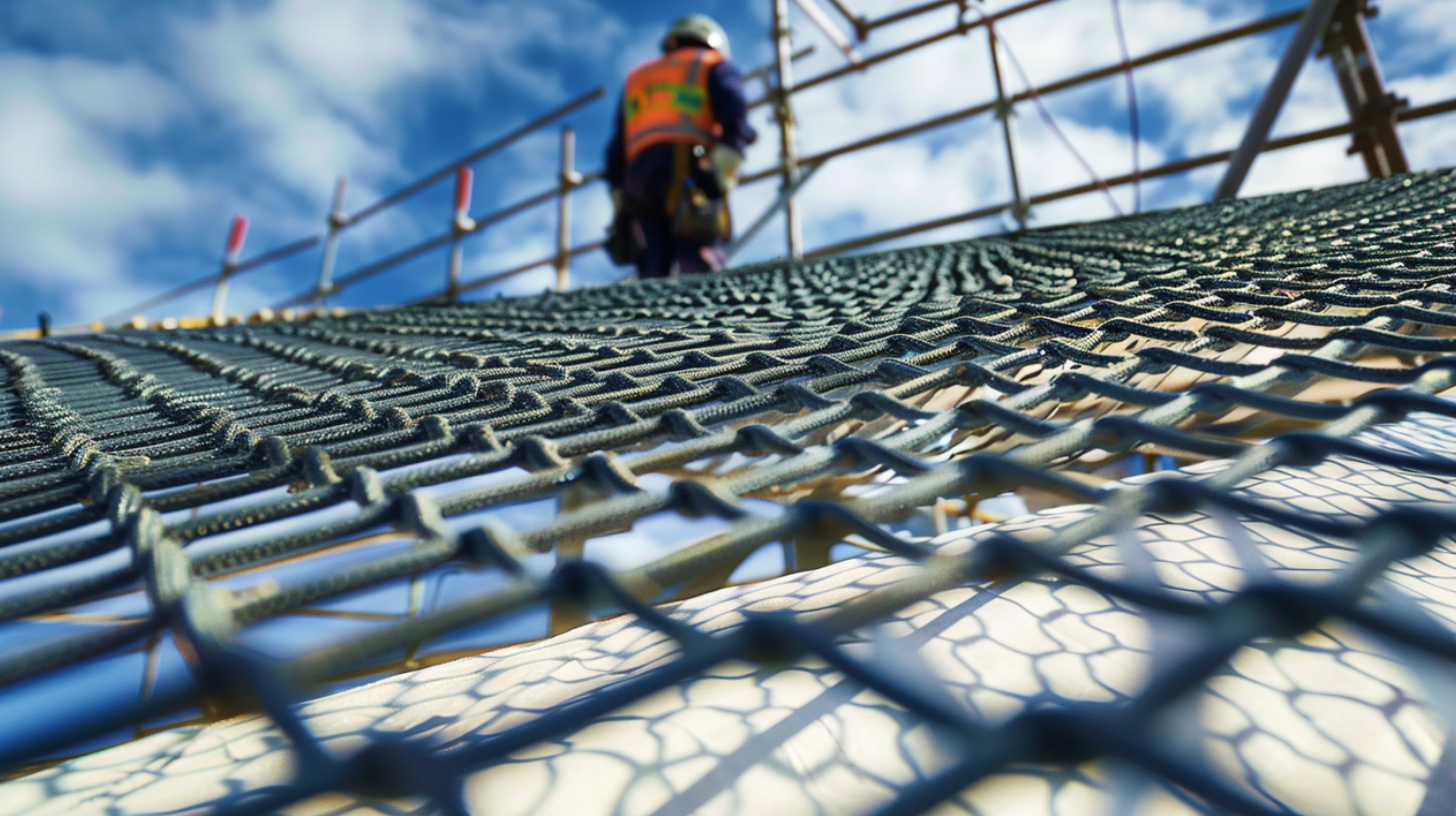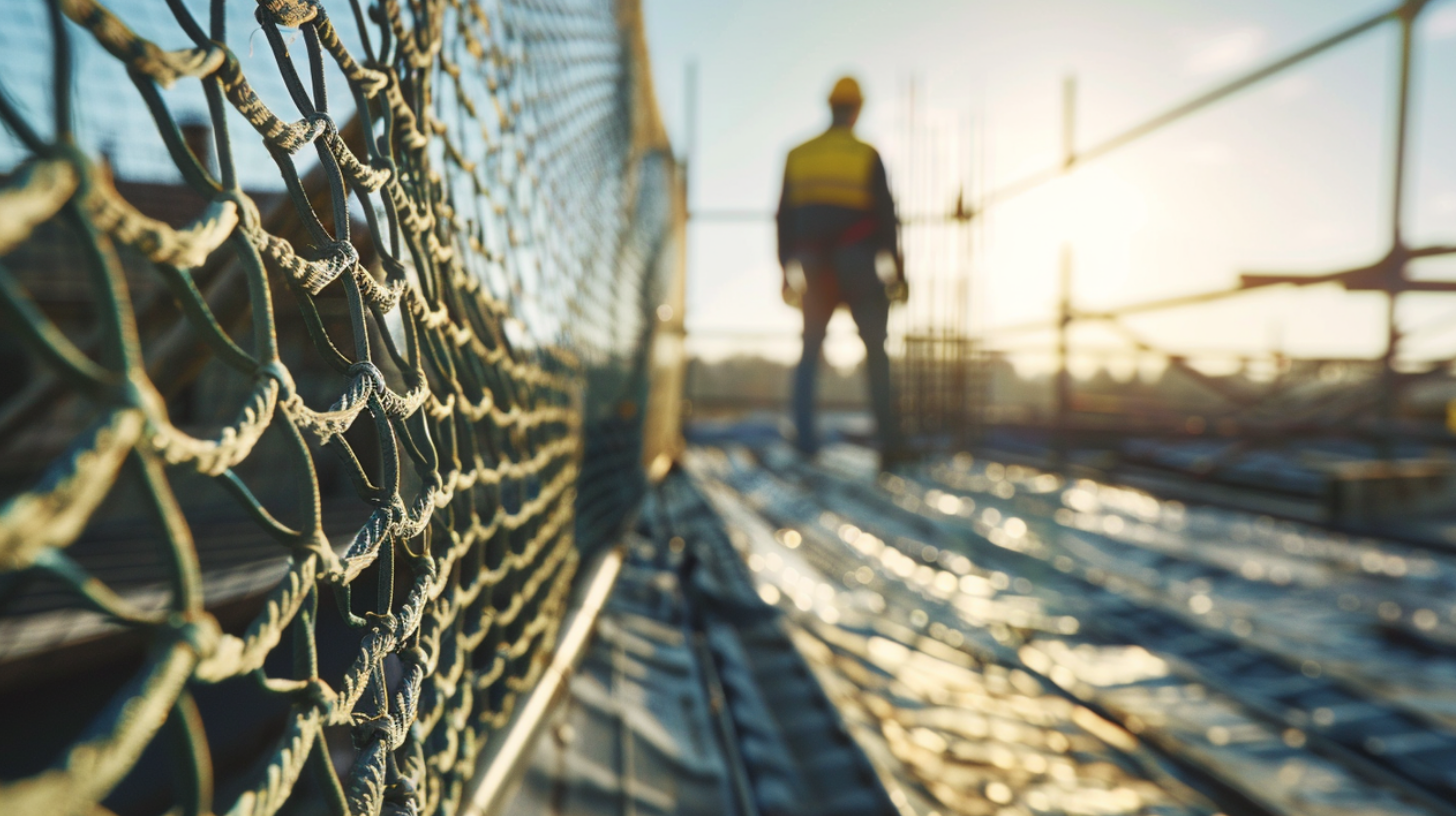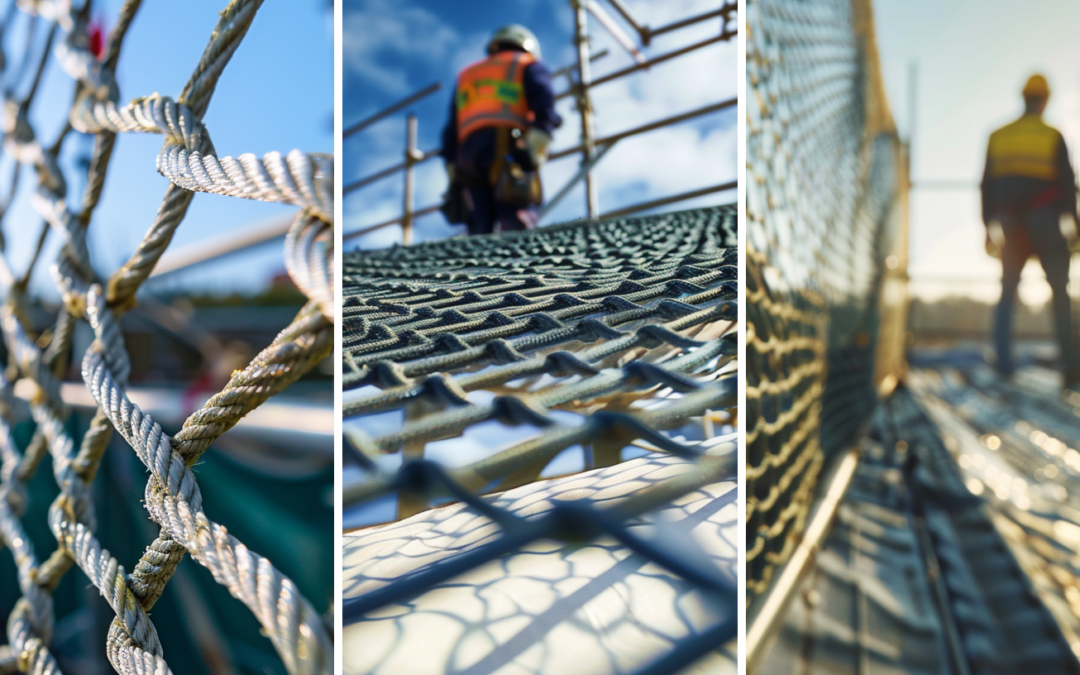Brief Overview of the Importance of Roofing Safety Net

Roofing Safety Net - Role of Safety Nets - Sky Roofing Construction & Remodeling
Role of Safety Nets
Safety nets are typically made from high-strength materials such as nylon or polypropylene and are installed horizontally across the work area. They act as a safety barrier, preventing workers from hitting the ground or lower levels, thus reducing the risk of severe injuries or even fatalities.
One of the main advantages of safety nets is their ability to provide collective fall protection. Unlike personal fall arrest systems requiring individual equipment, safety nets simultaneously protect multiple workers. This makes them particularly useful in construction and roofing projects where multiple workers may work simultaneously on different roof areas.
Additionally, safety nets are easy to install and remove, making them a practical choice for temporary or short-term work sites. They are also cost-effective since they can be reused, with proper maintenance and periodic inspections, saving companies the expense of purchasing new equipment for every project. They can also be tailored to fit different structures and roof designs, ensuring maximum worker protection in any situation.
Due to their efficiency and practicality, safety nets are many contractors’ preferred fall protection method. They are especially valuable as an additional safety measure during the coldest weather, when conditions can be particularly hazardous. Ensuring that every piece of equipment, including safety nets, is properly maintained and utilized can make a significant difference in preventing accidents and ensuring the well-being of workers.
Types of Safety Nets Used in Roofing
- Fall arrest nets are designed to catch and distribute the force of a falling worker, preventing serious injuries or fatalities.
- Personnel safety nets are intended to catch tools, equipment, or debris, ensuring they do not fall and potentially harm individuals below.
Benefits of Using Safety Nets
- They effectively arrest falls and significantly reduce injuries or casualties by absorbing the energy from falling individuals. This fall arrest system is a vital prevention method that ensures workers are protected and gives them peace of mind while working on elevated structures.
2. Safety nets can catch tools, debris, and smaller items, preventing potential accidents and damage to the surroundings. This maintains a safe working environment and increases overall productivity by avoiding disruptions caused by falling objects.

Roofing Safety Net - Maximum Fall Height - Sky Roofing Construction & Remodeling
Maximum Fall Height
The maximum fall height refers to the distance a worker can fall before the safety net reliably arrests their fall. It is a crucial safety measure that ensures the well-being of workers in the event of an accident. The roofing safety nets are designed and tested to meet strict safety standards, including considering the maximum fall height.
Understanding the maximum fall height is vital as it ensures the appropriate placement and installation of safety nets on construction sites. Workers can confidently work at heights, knowing that the safety net will effectively protect them should a fall occur. By adhering to the specified maximum fall height, construction companies and contractors can maintain a safe working environment and minimize the risk of injuries.
Determining the Maximum Height for Fall Protection
The Safety Net Calculator can determine conformity and the maximum permissible fall height. This calculator considers various factors such as the strength of the net, the distance between the net and the working surface, the nominal fall height, positioning limits, and the potential impact energy. By inputting these factors into the Safety Net Calculator, contractors can determine the maximum distance the net should be installed to provide effective fall protection.
Additionally, understanding the center of gravity of the falling object or worker is critical in calculating the correct placement and positioning of the net. Conducting this analysis is essential for maintaining a safe working environment and preventing accidents and injuries. Contractors can create a secure and productive worksite by correctly installing the safety net systems within the determined permissible fall height.
Mesh Size
To comply with safety regulations, a mesh size standard must be followed. The standard sizes for roofing safety nets typically require a mesh size of no larger than 100mm x 100mm. This ensures that the netting is small enough to prevent objects or individuals from falling through while allowing for proper airflow and visibility on the job site.
By adhering to these standard sizes, roofing safety nets provide several benefits. First, they offer a reliable means of protection for workers on the construction site, reducing the risk of severe injuries or fatalities due to falls. Second, the nets also prevent debris or tools from falling off the roof, preventing potential damage to property or harm to people below. Additionally, using safety nets can save time and money by reducing the need for costly and time-consuming cleanup after a construction project.
To ensure an additional safety factor, it’s essential to maintain a proper safety distance between the safety net and the working surface. This distance and the standard mesh size ensure that the safety net effectively catches and holds any falling objects or individuals, providing comprehensive fall protection on the job site.

Roofing Safety Net - Safety Requirements and Guidelines - Sky Roofing Construction & Remodeling
Safety Requirements and Guidelines
Safety nets have become indispensable tools in the roofing and construction industry. They provide reliable means of protection for workers. Implementing these nets according to the industry’s code of practice makes job sites safer, significantly reducing the risk of falls and related accidents.
OSHA Regulations for Safety Netting on Roofs
Moreover, the netting mesh size must adhere to OSHA’s guidelines to prevent objects from passing through. Additionally, the safety netting must have sufficient impact resistance to absorb and distribute the force of falls effectively. To ensure compliance with these regulations, contractors should use a checklist for safety net installation, covering factors such as mesh size, clearance distance, and strength requirements.
By following these OSHA regulations and employing a combination of strength and clearance distance requirements, contractors can ensure the effectiveness of safety netting in preventing accidents and injuries on roofs, thus fostering a safer working environment for all involved.
Testing and Inspection Guidelines
Workers’ competence is also vital, as they should be trained to handle safety nets correctly and be aware of the specific hazards involved. Regular safety net inspections, including visual inspections, drop testing, and annual testing, should be conducted to ensure their ongoing effectiveness throughout roof construction and refurbishment projects.
Moreover, safety nets should undergo tests for UV degradation, considering the adverse effects of exposure to adverse weather conditions over time. Annual UV testing should be part of the maintenance routine to assess the netting’s integrity and durability. By adhering to these best practices and ensuring that safety nets meet the relevant product standard, the benefits and advantages of safety nets can be fully realized, providing a safe environment for workers and bystanders alike.
Secure Your Roofing Project Now with Sky Roofing Construction & Remodeling
A roofing safety net is critical to any construction project involving work at heights. It protects workers, prevents accidents, and ensures compliance with safety regulations. If you’re starting a roofing project, contact Sky Roofing Construction & Remodeling (https://www.skyroofingconstructiontx.com/) at (210) 942-9797 for expert guidance and consultation. Our team can assist you in implementing top-notch safety measures, ensuring a secure and efficient roofing project.
Willis Vachon is a seasoned contributing writer for Sky Roofing Construction & Remodeling, specializing in the technical and safety aspects of roofing construction. With a keen eye for detail and a passion for ensuring quality and safety in every project, Willis provides valuable insights that help both professionals and homeowners make informed decisions about their roofing needs.

